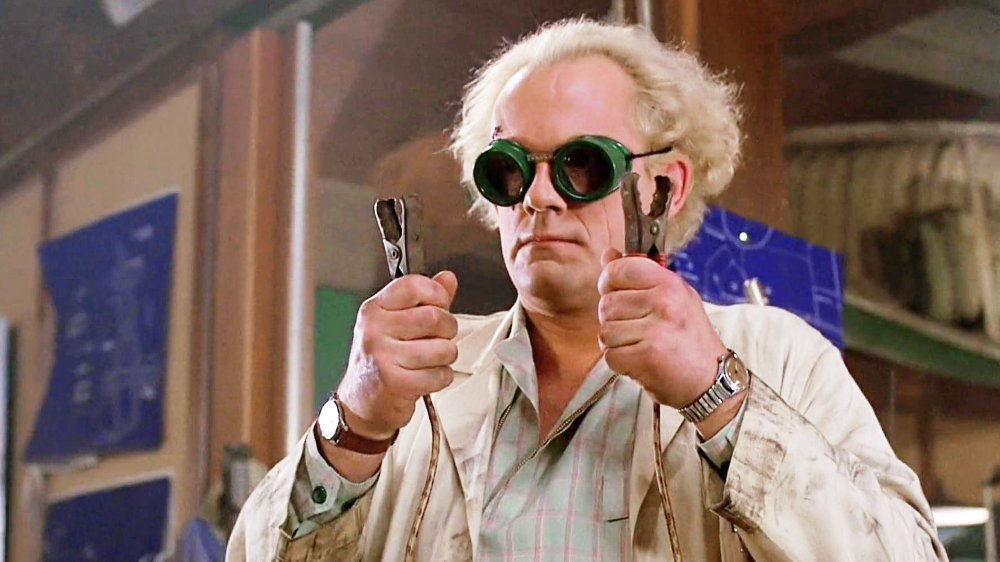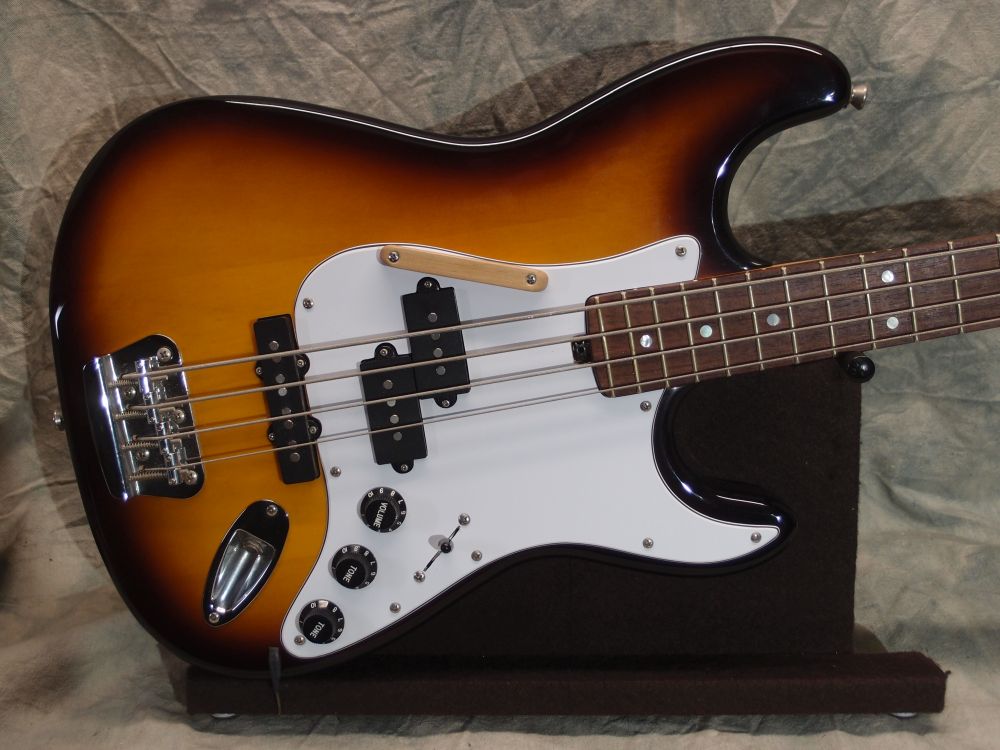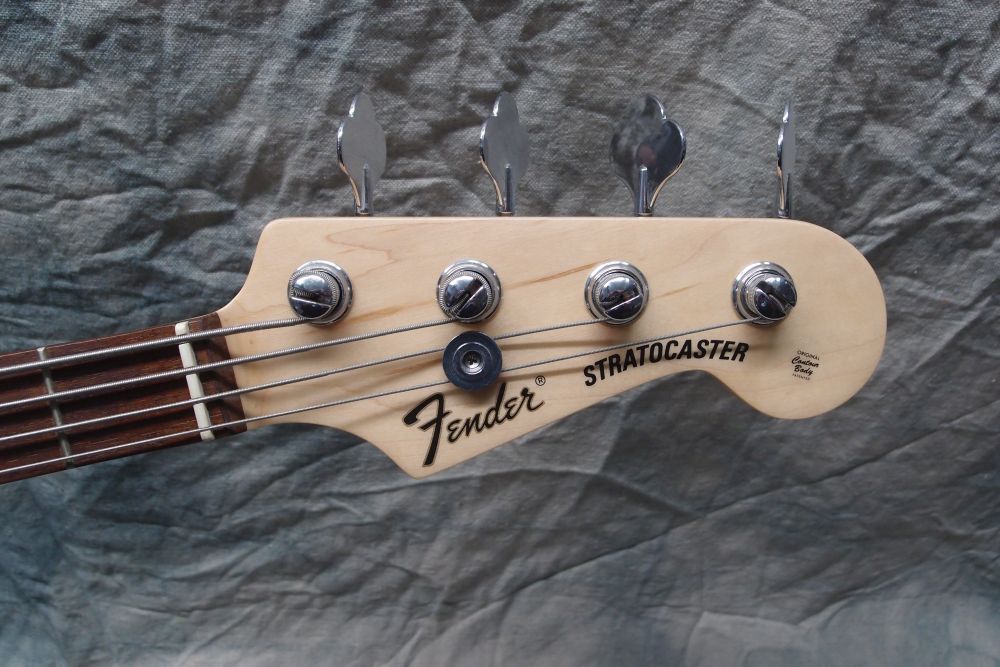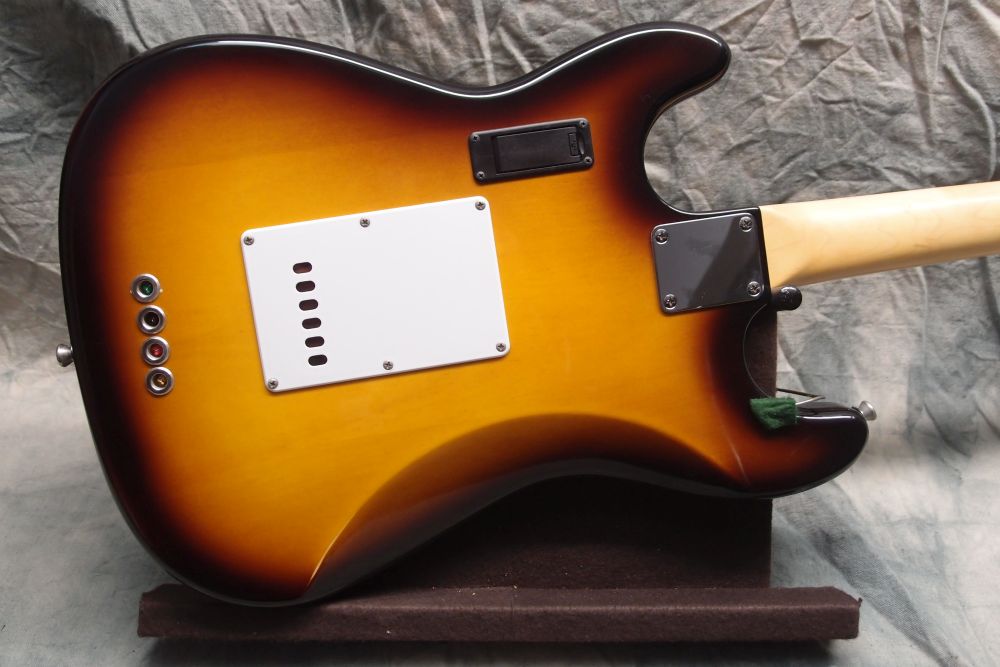March 28, 2019
Plans
March 28, 2019

I've been thinking about what I want to do luthiery-wise from here on out, and I think that apart from the cool Radiata glue-ups, I am going to do mainly plywood-core Danelectro-style bodies with Tolex side bindings. I want to avoid bothersome complications like three-dimensional paint jobs. If it's not enjoyable, then why bother?
What I am not going to do is pay top dollar for slabs of firewood. I'm not even very interested in lumberyard poplar anymore. I keep my eyes peeled for dumpster tonewood, and I would love to get another free teak cutting board. Teak is hard enough to leave with an oiled finish.
I have worked out lots of nice options for fronts, from fancy veneers to solid colors and bursts. For the backs -- who really cares about the back? -- hammered spray paint works very nicely. I may experiment with some of the crinkle paints that are available as well. For backs, I want to find finishes that are simple, easy, inexpensive, and not ruined by their first encounter with a belt buckle.
Both the UV-poly and the water-based 'poly' proved to be complete failures, although the UV may have uses for other things. Enough experimenting with finishes, I am going back to oil-based polyurethane exclusively. I also want to try more with non-sprayed finishes. However, as far as I am concerned, oiled wood is not a finish.
For necks, I have found that Radiata pine from the hardware store makes an excellent lightweight neck. I have a good supply of fancy birds-eye maple, and a supply of walnut for fretboards, as well as several other pieces, and maple and oak whenever I want it from Home Depot and Lowes. I am in the process of finding out if Radiata can be used for a fretboard.
For scale length, I am standardizing on 32" for bass, unless I do something for which a different scale is intrinsic. I may try some "micro" scales.
I think my experiments with CA and glitter inlays are very promising, and I will continue that. Right now I have three different inlay patterns for a 32" scale, but Home Depot just gave me an enormous piece of acrylic template material, so I can make many more. I also have a wide range of different 1/4" dots. It might also be interesting to make inlays in bodies.
I have worked out a very simple truss rod design that uses a spoke nut and is even reversible, making it effectively double-acting. I am not against using good inexpensive double-acting rods from eBay, and now even StewMac. For guitars, I will continue my practice of fixed steel tube truss rods. I will continue with bolt-on necks exclusively.
I will continue my experiments with cheap piezos and homemade buffers. I have a good stock of lipstick pickups, a few Strat-sized humbuckers, and some others. I want to start building simple onboard effects, I have a couple of fuzz designs that I could try right now.
I have a good supply of standard pickguard materials, and I just got a big free sheet of thin acrylic.
I still have a lot of kooky ideas, and I get more all the time. What I am not interested in is building the same old thing the same old way that is done better and cheaper in factories around the world, or spending a fortune on overpriced 'luthiery' parts and materials.
Just wait until I finish my $50 Rickenbacker clone.









